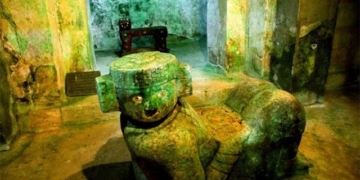The woolly mammoth is a famous prehistoric giant and belongs to a large family with ten different species.
Based on fossil data, the largest woolly mammoth could reach a height of up to 4 meters and weigh 10 tons, while the smallest woolly mammoth was only 1/30 the size of the largest species and lived on islands in the Mediterranean Sea.
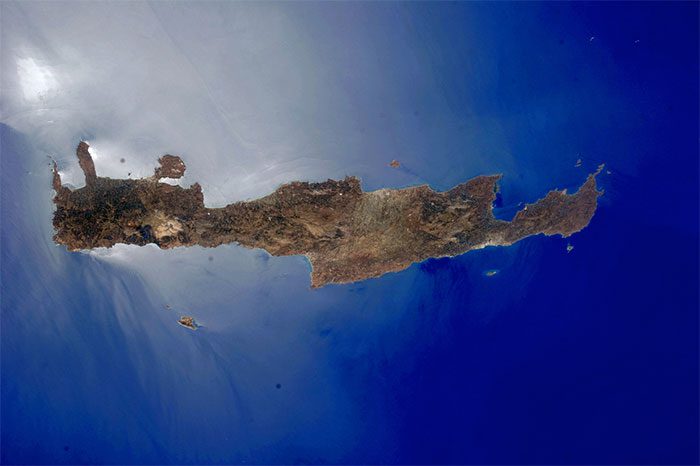
Crete is the largest and most populous island of Greece, as well as the fifth largest island in the Mediterranean. It is also one of the 13 regions of Greece. The island holds significant economic and cultural heritage value for Greece while maintaining local cultural characteristics. Photo: Zhihu
Crete Island is located in the eastern Mediterranean, covering an area of 8,336 square kilometers and is considered the cradle of Mediterranean civilization. Archaeological discoveries have shown evidence of human activity on Crete over 12,000 years ago, followed by the emergence of the famous Minoan civilization.
In ancient Greek mythology, the wife of the king of Crete and a Cretan bull gave birth to the Minotaur, a monster with a human body and a bull’s head, for which a labyrinth was subsequently built. The monster was later killed by Theseus, the illegitimate son of the king of Athens.
In reality, these are merely mythological stories, and no human-shaped monsters existed on Crete. However, this island was once home to a species of miniature woolly mammoth.
In 1904, British paleontologist D. Bate discovered six strange tooth fossils on Crete. After studying them, Bate and others believed that these teeth belonged to an ancient elephant species, and in 1907, they named this elephant species Palaeoloxodon creticus.
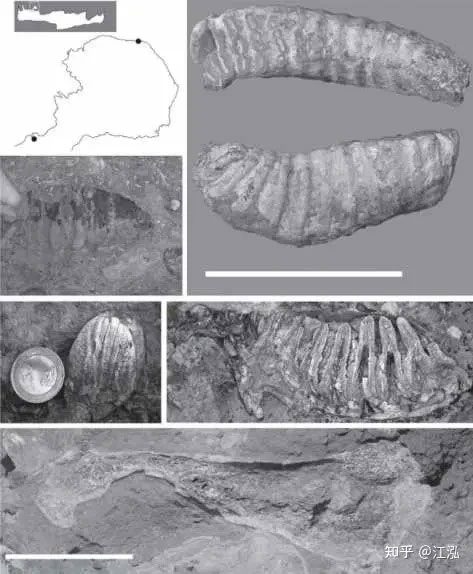
Fossils of the ancient elephant discovered on Crete. The fossils of this woolly mammoth were found a century ago. However, at that time, scientists were still uncertain if they were mammoths or another ancient elephant species. (Photo: Zhihu).
By 2006, when paleontologists used DNA technology to study the ancient elephant species on Crete, they found that the DNA was similar to that of woolly mammoths, which meant that the fossils found on Crete actually belonged to the woolly mammoth family. Thus, it was renamed Cretan woolly mammoth (Mammuthus creticus).
The woolly mammoth that lived on Crete is the smallest known woolly mammoth species, with an adult body length of less than 1.5 meters, a shoulder height of 1 meter, and a weight of 200 kg. At this size, the Cretan woolly mammoth is not much larger than newborn African savanna elephants.
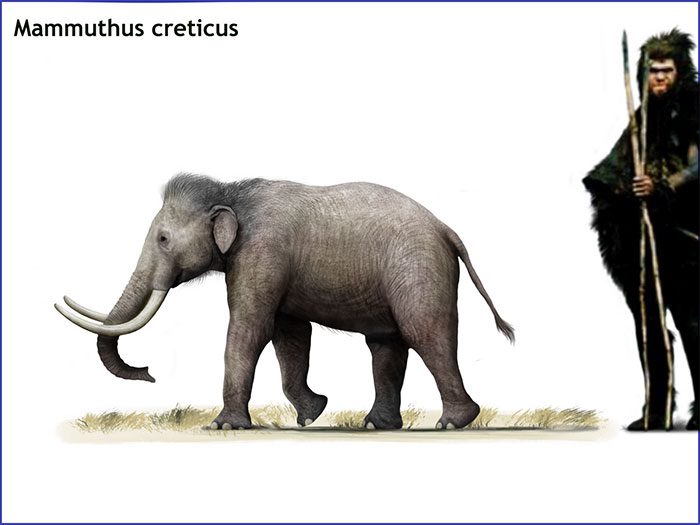
Size comparison between the Cretan woolly mammoth and humans. Mammuthus creticus arrived on Crete about 3.5 million years ago. Its ancestors may have been one of two European woolly mammoth species: Mammuthus meridionalis and Mammuthus rumanus, which became extinct around 800,000 years ago. (Photo: Zhihu).
Despite its very small size, the body structure of the Cretan woolly mammoth is not significantly different from that of other woolly mammoths. The most notable feature of the Cretan woolly mammoth is its long, flexible trunk and a pair of curved tusks, which the flexible trunk can use to grasp leaves or suck water, and the long tusks can serve as weapons. Compared to modern elephants, the ears of the Cretan woolly mammoth are much smaller. Despite this size reduction, the Cretan woolly mammoth was still much larger than many other animals on the island at that time.
If there are any clear differences between Cretan woolly mammoths and those living in northern regions, apart from size, it is that they did not have long, thick fur on their bodies, as they lived in warmer areas and no longer needed long fur for warmth.
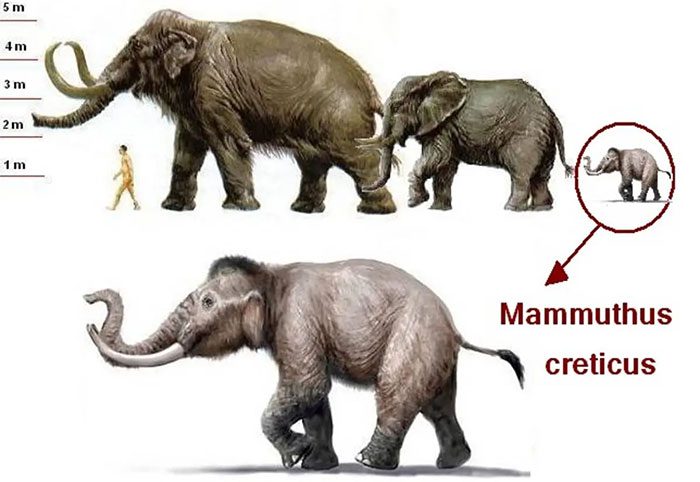
Cretan woolly mammoths are a prime example of insular dwarfism. Their weight was only about 1/100 of their ancestors. (Photo: Zhihu)
So how did these woolly mammoths make their way to Crete in the Mediterranean Sea? As far as we know, during the Pleistocene epoch, our planet was in an ice age, with sea levels over 100 meters lower than today. Due to the decrease in sea levels, Crete was then connected to the European mainland, allowing the ancestors of the Cretan woolly mammoth (Mammuthus meridionalis) to reach the island at that time.
When the ice age ended and sea levels rose again, separating Crete from the mainland, the woolly mammoths that could not leave the island shrank in size due to limited food sources.
A similar situation also occurred on the neighboring island of Sicily in the Mediterranean, where a herd of ancient elephants remained and evolved into the dwarf species Palaeoloxodon falconeri, also known as the European or Sicilian dwarf elephant.
The woolly mammoths on Crete successfully adapted to island life by reducing their size, but the island’s environment could not support a large number of Cretan woolly mammoths, resulting in a very low population density. When humans arrived on Crete, they hunted and killed the Cretan woolly mammoths until they became extinct, and the remaining skulls of the Cretan woolly mammoths became the prototype of the Cyclops in Greek mythology.

















































